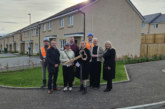
The shortage of homes in the UK has been a political hot-potato for many years – but changes are now afoot to tackle the issue. Partner at leading national property consultancy Bruton Knowles, James Bailey, dissects the proposals put forward by government to tackle the lack of new homes being built.
The Government is seeking to help more people own their home and increase the number of new homes built each year through proposed changes to the planning process, which have been set out in the new Housing and Planning Act 2016 and Neighbourhood Planning Bill 2016.
The Act seeks to simplify and speed up the planning process to support those communities that are seeking to meet local housing and wider development needs through increased neighbourhood planning. So what is proposed and more importantly how will it work in practice?
A broadening to the definition of affordable housing will see starter homes for first time buyers become part of the group, together with a commitment to release more land for starter homes, including brownfield land within the green belt. This seeks to deliver on the Government’s manifesto commitment of 200,000 starter homes a year with a minimum 20% being at below market value price.
The introduction of permission in principle is a new way of securing planning permission granted on land allocated as suitable within the local and neighbourhood plans and on brownfield registers, with specific site detail being agreed through technical details consent. As part of the evaluation process the brownfield register principal has been piloted with 73 local authorities, with consultation also taking place on the technical details, with an anticipated roll out in early 2017.
The reforms include an aspiration to improve both local plan making and neighbourhood planning as well as speeding up the decision making process. This is likely to include set time periods within which local authorities must take decisions and a simpler, more automatic process for designating an area together with increased rights for forums.
The aspiration is clear: to make the plan making process more effective in identifying suitable housing and development sites through neighbourhood planning and brownfield registers, with the actual planning permission process being speeded up.
In reality, the Government funded Homes & Communities Agency together with housing associations will be able to deliver housing stock through the new mechanisms, while private developers and housebuilders will have a greater regard to the location of sites and the potential market reaction to them.
For example, the barrier to entry may be at its lowest for a brownfield site that can be selected as part of the plan making process and also be applicable for a permission in principal but not in a location best able to deliver a broad range of housing stock, including starter homes. A more complex and difficult site in terms of obtaining planning permission can provide both greater returns to the developer and a better quality scheme if located in an area with excellent local amenities, such as good quality schools, communication routes and recreational areas.
It has to be recognised that local planning authorities already have time limits and guidance in respect of planning applications, with a lack of resource often being cited as the issue around adherence. So, unless there is a plan alongside these reforms to increase the number of planning officers it seems likely that the aspiration will fail to match up to the reality, much like the Government’s housing targets.
Finally, the changes are likely to be introduced at a time when UK plc is going through a period of financial remodelling to deal with the serving of Article 50 after Brexit, which presents another challenge for the housing building industry.








